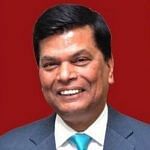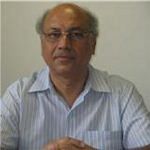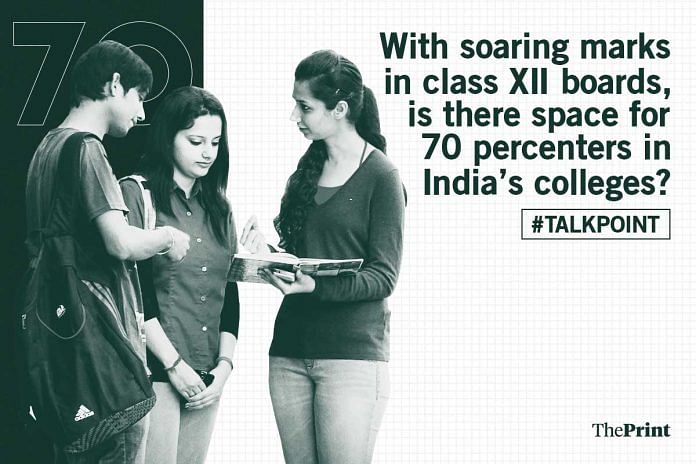On Sunday, the CBSE announced its class XII board results. The all-India topper scored a staggering 99.8 per cent. In 2017, the top scorer got 99.6 per cent; in 2016, it was 99.4; and in 2015, 99.2.
ThePrint asks: With soaring marks in class XII boards, is there space for 70 percenters in India’s colleges?
We need a college admission system based on selection, not elimination
 Ashok Ganguly
Ashok Ganguly
Former CBSE chairman
With more than 7 per cent of the students taking class XII exams scoring 90 per cent and above, the scenario is definitely not healthy. The situation is neither giving a normal distribution of students to colleges nor a bell-shaped curve, but a skewed distribution that puts a question on the credibility, reliability and validity of our examination system. This is happening across all boards. It indicates a contradiction in the Indian education system.
Having said this, with tertiary education in bad shape pan-India, the only hope now rests with Delhi University, besides of course IITs. There is a huge gap between demand and supply, and the entire admission system is based on a process of elimination. The 70 percenters have virtually no hope in India’s premier colleges. Some of them hope to join evening classes or vocational colleges. Some may contemplate joining courses abroad.
With increasing number of students qualifying class XII exams, thanks in part to the Sarva Shiksha Abhiyaan, time has come to expand the higher education system in India. More private players must step up to the rising aspirations. Some restrictions on the fee structure could be needed but those can be worked out. It is in the interest of at least those students who can afford education but want to avoid vocational colleges.
There is no point in preventing the students, who have passed class XII exams, from pursuing higher education just because they weren’t able to score so-called ‘higher marks’.
It is also time to think of admission in undergraduate courses on the basis of a process of selection instead of elimination.
Only difference between 65 and 99 percenter is that the latter may get into DU
 Savita Mehta
Savita Mehta
Vice-president, Communications, Amity group
There is no paucity of opportunities, especially for students in the private sector. If a student wants to pursue psychology or history honours, or any other subject, universities like ours offer a bouquet of courses. Universities like ours allow students to pursue their academic interests as well as their creative passion.
A student who has scored well in biology but not in physics may not be able to pursue MBBS from a government college. However, such a student may choose a stream like nanotechnology at a private university.
Private universities like ours also offer interesting courses on photography, which are normally not graded at other universities.
Competition is not something new. Even when we graduated, there was competition. Few students did score in 90s. However, it is true that the number of students scoring such high marks has increased drastically.
The only difference between a 65 percenter and a 99 percenter is that the latter may get into Delhi University. But the student with a 65 per cent can pursue the same course from a different university. Students are very focused these days and know what they want in life.
There are vast opportunities now. Number of colleges has increased, courses have increased. For students who can’t afford private universities, there are loan schemes. These loans also provide incentive to students who work hard.
These days, marks are just numbers and a means to clear the XII boards.
A mark sheet is no longer a mirror of one’s performance
 Shyam Lal Ganguli
Shyam Lal Ganguli
Chief education officer with Aditya Birla Group
Let’s be clear that these aren’t marks, these are fake marks. I have been a paper setter and a chief examiner. I can’t think of any student scoring in the 90s. My subject is science, where it is still possible to score cent per cent. That is why it is astounding to see students score full marks in English, history, and economics.
A mark sheet is no longer a mirror of one’s performance but gives a distorted image. A child who has hundred on the mark sheet may have barely 80 marks in reality. Earlier, when a child scored 60 per cent, the entire community celebrated. Seventy-five per cent was distinction; it was one in a million. Nowadays, everyone celebrates only a percentage that is over 95 per cent.
On one hand, we are bragging that quality of education is improving, and on the other hand, we are inflating marks.
All exams are being standardised, which inevitably lowers the quality of our education system. This is done on various levels. First is paper setting, where moderators dilute the paper to make it easy. Then, the marking scheme is diluted. This is done to ensure that a very low percentage of students fail the exam. Thus, marks are inflated.
Earlier, the Delhi University VC had said that it wasn’t DU’s fault that so many students couldn’t get admission. They had blamed the CBSE for giving high marks. That is in part true because CBSE and ICSE are very liberal with their marking scheme.
Since marks soared for CBSE and ICSE, state boards followed suit. They did it to ensure that their students too get admission in top colleges. However, these student toppers subsequently struggle to cope at the undergraduate level. This system is detrimental to both, our colleges and the students. We are not doing justice to our children.
A survival-of-the-fittest kind of situation is not healthy for our children
 Ashok Aggarwal
Ashok Aggarwal
President, All India Parents’ Association
There are two sides to this issue.
On the positive side, it boosts students’ morale when they score so well in an exam. High scores can be seen as rewarding and make the children and their parents happy. The situation turns negative, when despite scoring so well, the child doesn’t get a seat in a good college.
As the cut-off percentage increases, so does the pressure on the students. The system has become far more competitive than before. This is a critical issue. A survival-of-the-fittest kind of situation is not healthy for children. Economically, parents suffer because they need to invest in tuitions to help the children keep up with the increasing grades.
Life ends up becoming mechanical for children, where they seem to run like clockwork, from school to tuitions and other classes and then back home. This is not what we want for our children.
This is a problem the government must address. It can increase the number of seats and ensure students have access to a decent higher education. In schools and colleges, teaching is hardly ever up-to-the-mark anyway. We need an honest government policy that can address this issue.
Best DU colleges don’t lower their cut-offs for sought-after courses
 Kritika Sharma
Kritika Sharma
Special Correspondent, ThePrint
The number of students scoring between 95 and 100 per cent marks in CBSE Class XII has increased phenomenally in the last five years or so. With this, the competition for admission in colleges, such as in Delhi University, has become fierce. This is because DU colleges grant admission on the basis of Class XII percentage.
The number of students who scored above 95 per cent is close to 13,000 this year, nearly 2,000 more than last year. In such a scenario, cut-offs for admissions have been soaring.
None of the best colleges in DU, like SRCC, St. Stephen’s, Miranda House, Hansraj College and LSR, lower their cut-offs beyond 90 per cent for sought-after courses. This leaves hardly any scope for those who score less than 90 per cent marks. The 70 percenters eventually have to rely on either a BA pass course or get admission in an institution which admits students on basis of an entrance test.
I for one, who scored 87 per cent marks in class XII in 2006, thank my stars that I am not a school student now. In fact, most people who wrote the exam with me scored between 75 and 90 per cent and got admission in good DU colleges. It is unthinkable now.
Compiled by Deeksha Bhardwaj, journalist at ThePrint.




Students are studying harder and found have a formula to get cent per cent marks in all the subjects in all board exams. So now 95% is equal to 85% earlier and 70% is equal to 55%. Admission issues are the same. Those not scoring high are not very bright students. That is Ok. all students cannot be equally academically bright. They will get admission in less reputed colleges as is the case in all the countries. So why worry. Being academically bright student is basically a luck which someone is born with. However it does not say that the student will also earn more wealth and fame later in the life, We need all kind of students for the future.
Admission should be based on aptitude for that particular course rather than score of a test with subjects of no relation to the course. I had friends who could make an Android app from scratch in 12th std and couldn’t get admission in cs and I know lots of cs graduates from so called prestigious institutes who don’t even know how to fix a small syntax error in a code. It’s time that we change the admission criteria.
So many foolish comments in the article and even the other comments.
The purpose of exam is selection and elimination. There is something called the bell curve which many people not aware.
The exam should be structured so that about 30% questions are easy, about 40-45% are tough, and the balance 20-25% questions are very tough, so that only someone with outstanding grasp of concepts will solve 20-25%.
This principle is followed in all civilized countries like U.K and U.S.
The reason is simple. when so many students in India score more than 90% then it boils down to silly mistakes and small errors which are separating 90% and 98%. This is really unfair to all the students getting 90 plus because the selection and ranking the silly errors and minor issues decide the ranking rather than really separating the brilliant and not so brilliant and the average score people.
The purpose of exam should be kept in mind by the examiners. Only a small number of people should be able to tackle the very tough questions . Unfortunately the exam setters are trying to placate the students so that anybody who memorizes can score very high marks also.
Injustice.. With us 50% no admission in colleges and all students marks in cbse is 70%……
If mean Indian study system always fail..????
Cbse is poorly checking a students marksheets….?????
Ashok Aggarwal
President, All India Parents’ Association Is Right. These Are Not Good Signs That Adolesents Join Such Cut-Throat Competition. Its Bad Effects Have Started Pouring In. Every Year Several Students Commit Suicide, Run Away From Homes And Somtimes Become Too Passimistic. It Ought To Be Stopped. But Who Will? Parents, Teacher And School Managements: Are All Responsible For This Scenario. Will They Read This Article And Mend Their Approach?
Its really injustice….witb us..
One has got 99% and another failed in all subjects..